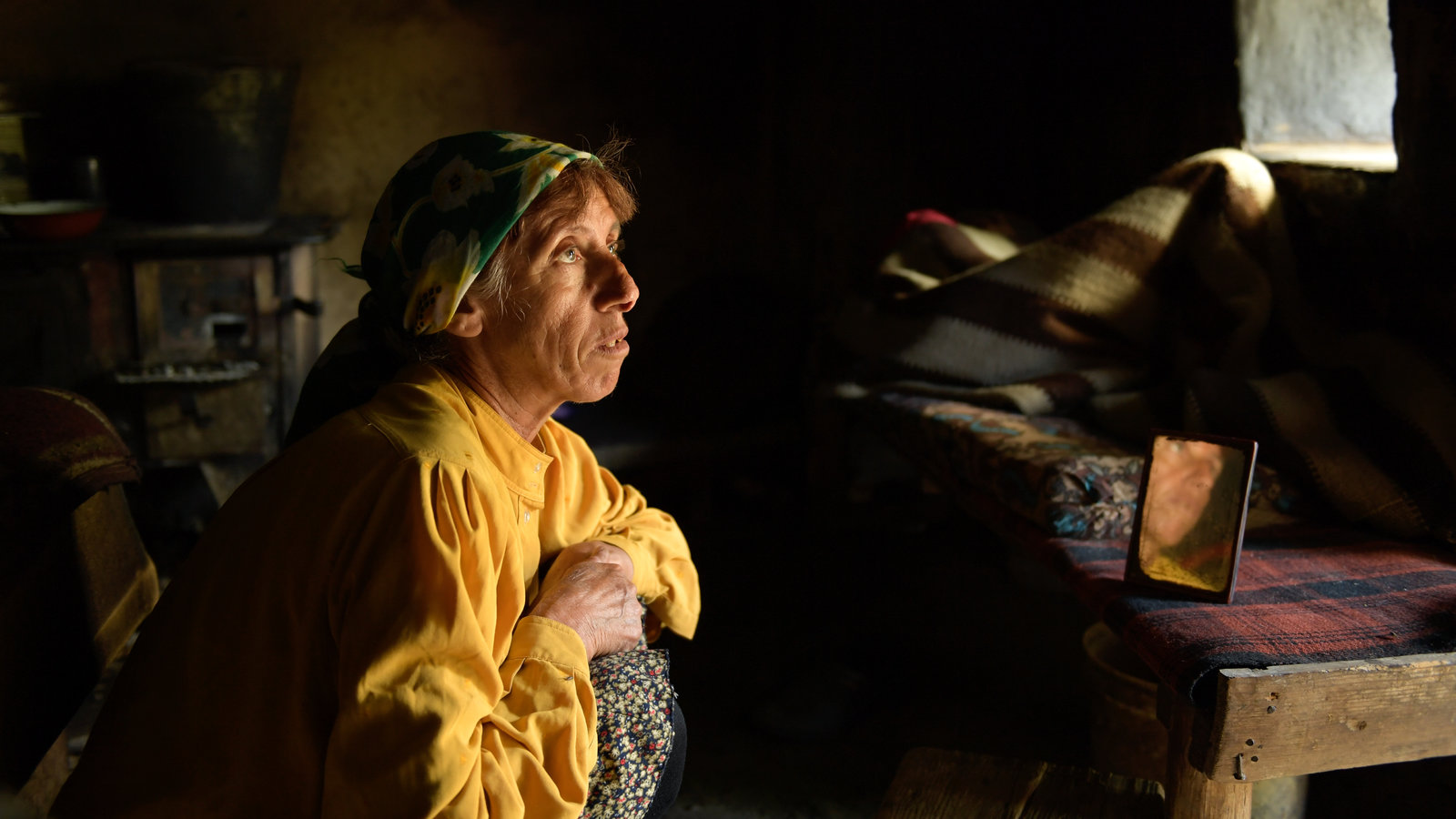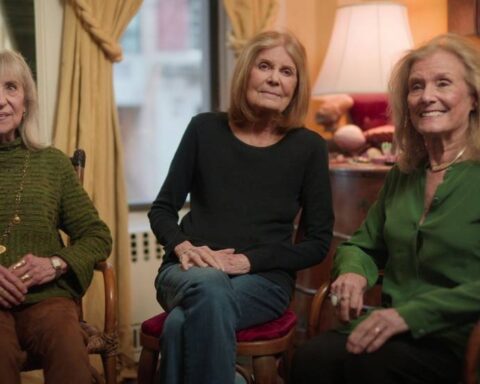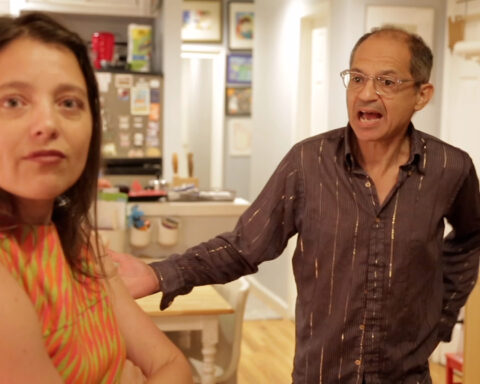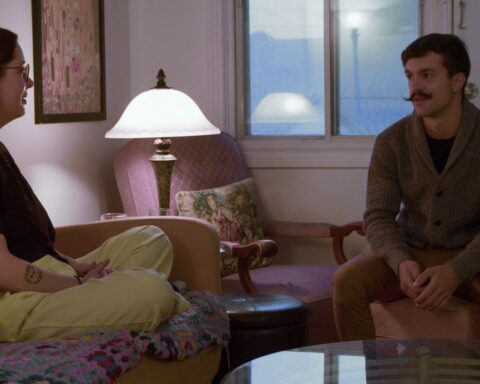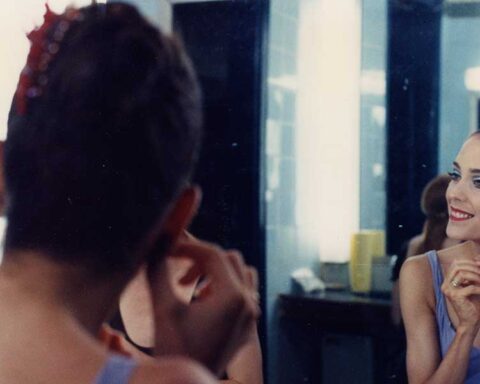One of the mightiest heroes audiences will encounter this summer is a beekeeper named Hatidze. She’s the last of a dying breed, a lone woman preserving a traditional method of beekeeping and fighting for a way of life as she makes honey and cares for her ailing mother in isolation in rural Macedonia. Hatidze’s incredible story of resilience is finely observed by directors Tamara Kotevska and Ljubomir Stefanov in Honeyland. The duo follows the queen bee with cinematographers Fejmi Daut and Samir Ljuma, capturing her daily rituals, nurturing the bees and ensuring that she and the hive have an equal share of resources for the months ahead. Hatidze’s unruly neighbours, particularly the patriarch Hussein, don’t share her respect for the land and conflict arises as the family next-door pillages the hives at an alarming rate without understanding the delicate balance that the beekeeper has preserved over the years.
Audiences can learn a lot from this beekeeper and her traditional ways as she stands strong in the face of adversity. Perhaps audiences are learning from Hatidze and that’s why Honeyland is one of the biggest sleeper hits of the year on the festival circuit. After winning a trio of prizes at Sundance including the Grand Jury Prize (World Cinema), the cinematography award for its exquisite sun-bathed lensing, and a special prize for “impact and change,” Honeyland has connected with audiences at festivals worldwide, including Hot Docs in Toronto. Honeyland offers something for everyone with its simple human story, intimately and gorgeously told, that illustrates the action every citizen of this world can take to preserve the natural balance.
POV spoke with Honeyland directors Tamara Kotevska and Ljubomir Stefanov by telephone ahead of the film’s premiere.
POV: Pat Mullen
TK: Tamara Kotevska
LS: Ljubomir Stefanov
This interview has been edited for brevity and clarity.
POV: How did you first meet Hatidze? Was she reluctant to let you into her life given that she lives in such isolation?
TK: A couple of months ago, we took the first journalist to personally speak to her. It was a Korean journalist from London who came especially to talk to her and her answer on this question was, “They didn’t find me. I found them.” She was ready and she wanted to tell her story to the world being so isolated in this village. We found her [doing] research for a documentary that was supposed to be about the area, because this area is very interesting in our country, especially the river that is close to the village. We started by exploring the area and that’s how we found the beehives. That’s how we came to her.
LS: This is not our first film. The same crew—us two as directors with our two cinematographers and the same editor—worked on another smaller documentary before this. While finishing the documentary, we started with that research and somehow continued with our collaboration.
POV: With the two films, what were some of the challenges of shooting in such isolation? There’s no electricity and it’s far from town. How did you adapt your approach to the environment?
LS: The process of filming was very enthusiastic. We were, as we said, a crew of four—us plus two cinematographers—and because this area was abandoned a long time ago, some 70 years, there are no roads, no electricity. We were filming in sessions that were a maximum of three to four days in a row because we had only one car. There was space only for the four of us, our equipment, and our food. We were sleeping in tents in the big yard and pretty enthusiastic.
POV: How did you navigate the conflict between Hatidze and Hussein? You seem to get very close to both subjects. How did you navigate that role keeping both their trust as the situation escalated?
TK: These people have a lot of conflicts. This is just one of them. At the beginning, we didn’t know that they were a very important part of her life. We thought they were just the neighbors and had nothing in common. Finding out that they were a crucial part of her life made us think we must bring them into the film somehow. The secret to this was that Hatidze was very close with the children because she doesn’t have children of her own. Once we saw how she communicated with them, she slowly introduced us to them. We started eating together, singing, telling stories. The first scenes we [shot] were between Hatidze and the children and by following the children, we came to earn the adults’ trust.
LS: It was a long process because we started filming only with Hatidze and they were not there; they’re seasonal; and they appeared for the first time after five or six months of filming with her. The process of getting close and getting their trust took the next five for six months. The whole process of filming was something like two years.
POV: I understand it was 400 hours you filmed?
LS: Probably something like that.
POV: How do you decide which key moments to include out of such a range of material?
LS: The hard decision was what to throw in the garbage. We had a [thread] that drew our question of what we chose. From the first rough cut to the last version, there are no big differences. We would think about what to choose for a certain situation—this scene or that scene—but what was clear was the point of what was chosen [within] the line of the story.
POV: The film is so beautifully shot. What did you use to shoot these scenes and make the landscape so beautiful?
TK: All of it is shot with DSLRs with no artificial light. Everything you see is natural light in and out, interior and exterior. It’s handheld or static cameras depending on the shot.
LS: There is only one drone shot in the beginning. [When Hatidze scales a rock ledge to approach a bee hive.] We used only the normal cheapest microphones mounted on the camera. No additional equipment, no expensive cameras, no filters, no photographic lenses. Nothing.
POV: How much infrastructure is there for filmmaking in Macedonia? Where did you learn your technique?
LS: We come from different backgrounds. Tamara is from the film school. She graduated from film directing in the national film school in Macedonia, in Skopje . One of the cinematographers went to the same school. The other didn’t come from film school. I don’t have a film school [background]. My background is that I’ve been working on environmental issues for a long time with international organizations in documentary and short videos.
TK: It was a very interesting process of experimenting, especially because it’s our second film, which gave a chance to each of us to show our skills and bring to the process as much as we could. We found a very nice way to combine our different backgrounds and different knowledge/ For our reference as authors, we were inspired by directors who don’t use artificial light.
POV: The natural light brings out the landscape so nicely. On the environmental message of the film, Hatidze’s saying “Take half for you and leave half for them” is a powerful and relevant message. How can audiences bring this philosophy into their everyday lives?
LS: It’s early to say about the audience because the film hasn’t been in wide release. Our experience so far is only from the festivals, but depending on where we are showing the film, it is different. Regarding the sentence, “half for me, half for you,” we shot that scene in the very beginning; in the first week. It was clear that the line would be the environmental message in the film. It is so closely connected to one of the United Nations’ environmental millennium goals, which is an equal share of benefits between users and providers. Users are humans in all cases and providers are nature—in this case, bees—to ensure food security, which is also shown in the story at the end. From the environmental aspect, the film is obviously not about the bees. It is about fair use of natural resources.
POV: How is Hatidze now? Is she still able to survive making honey?
TK: She still is even though her situation changed after shooting because we made sure to fulfill her wish. This wish was to buy her a house in the nearby village with the award money we got from Sarajevo Film Festival, from the Turkish national television for work in progress. This was the first award we got with the assembly of the film, it was not even a rough cut then, and we made sure to return it to her. We helped her get this house in the nearby village and now she’s able to go back and forth, take care of her bees, and have a secure place to stay during the winter, which is close to her relatives.
LS: At the moment, she’s at a gala at at the Swiss embassy in Skopje. Eventually, she will come to the USA for this film.
POV: Yes, I imagine there are many gala dinners ahead!
Honeyland opens in Toronto at TIFF Lightbox on August 2.




